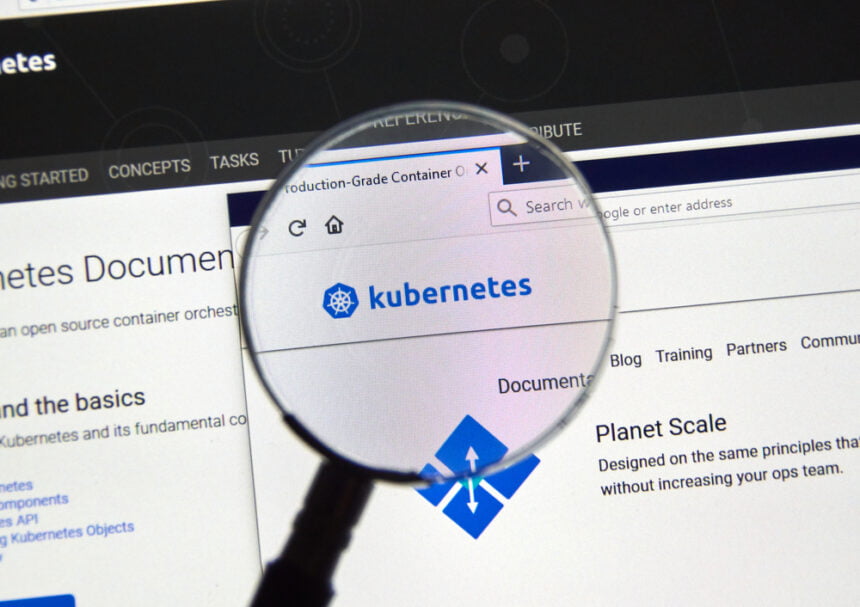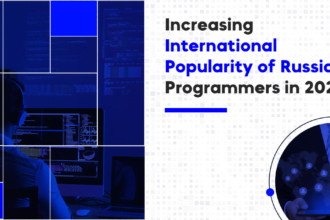We have previously talked about some of the open source tools available to create big data projects. Kubernetes is one of the most important that all big data developers should be aware of.
Kubernetes has become the leading container orchestration platform to manage containerized data-rich environments at any scale. It has vastly simplified container deployment and management yet with the added complexity of managing clusters. Therefore, we need to understand the underlying architecture as well as common issues in order to speed up the Kubernetes troubleshooting process if you want to create big data applications.
Common Types of Kubernetes Issues that Data Developers Must Recognize
Due to the complexity of Kubernetes, it can take considerable time and resources to troubleshoot issues in even relatively small K8s clusters such as dev or testing environments, especially if they have massive amounts of data sets. However, we can simplify this process by categorizing different issue types and narrowing down the troubleshooting scope for data-driven developers.
Big Data Application Issues
The first thing we need to ensure when troubleshooting Kubernetes is that the application is working as expected. This can be a challenge for applications that are highly dependent on complex data sets. Otherwise, we will be unnecessarily troubleshooting an issue that is not related to Kubernetes. This can be done by testing container functionality either in a holistic data-driven test environment or even in a local environment. This is one of the most important things to be aware of as a data-driven software developer.
Network Connectivity Issues
Connectivity issues can be categorized as internal connectivity issues that occur within the cluster and external connectivity issues that block access to the cluster or third-party data sets.
External Network Connectivity
Kubernetes clusters can be configured with external load balancers and firewalls to further enhance and complement internal Kubernetes configurations. In these instances, we need to check if any issues or configurations of these external networking resources block the Kubernetes cluster.
Internal Network Connectivity
Kubernetes network will consist of the following connectivity types;
- Container to container
- Pod to Pod
- Pod to service
- Service to external sources
Each connectivity type can contribute to a multitude of errors. The ideal approach for troubleshooting these network connectivity issues is to start from external connectivity options like k8s ingress and then move to services like load balancers, node ports, then pods, and finally, container connectivity. With each step, we reduce the troubleshooting scope by simply checking if communication between the correct resources happens.
Pod Configuration Issues
One of the most common issues faced by Kubernetes admins is Pod configuration issues. These issues can range from faulty deployment configurations, container image corruptions to issues in the node itself. However, they are also the simplest to diagnose as Kubernetes provides clear error messages indicating the root cause of an issue. Furthermore, we can easily figure out issues related to pods by looking at the Pod status or using describe or log commands.
Node Related Issues
These issues occur when the worker nodes are experiencing issues. Various node-related issues such as network issues, hardware failures, data loss or failures in provisioning issues in a node can directly impact pod creation and management, which will in turn directly impact the application. Kubernetes has built-in redundancy, which enables the application to recover even if some nodes fail. However, these node failures can cause performance degradations, and the best way to avoid such scenarios is to try to mitigate node failures. The Node Problem Detector provides an ideal solution to monitor the health of the k8s nodes and ensure maximum data stability.
Cluster Service/Component Issues
Kubernetes consists of multiple components that are required for smooth cluster operations. Especially different types of controllers from replication controllers, scaling controllers to resource controllers like node controller, services controller, etc. Issues in these components can even lead to complete cluster failures as they deal with the core functionality of Kubernetes. Thus, high availability architecture is used in most production environments to mitigate such errors. It enables the cluster to function normally even if one Kubernetes control plane fails.
Infrastructure Issues
Infrastructure-related issues are only applicable for self-managed Kubernetes clusters as the service provider is responsible for all the infrastructure in managed solutions. These issues are highly dependent on the underlying hardware and software configurations, requiring considerable time and effort to pinpoint and remedy them. As these infrastructure issues are outside the scope of Kubernetes, users will need external monitoring and diagnostic tools and services to help troubleshoot them.
Troubleshooting Kubernetes Issues
Kubernetes comes with an excellent toolset for monitoring, logging, and debugging. Therefore, it is essential to utilize all these inbuilt tools and services when troubleshooting Kubernetes clusters.
The kubectl itself provides a simple yet powerful command set to troubleshoot Kubernetes resources easily. These commands include the describe command to obtain information on Pods/Nodes, exec command to gain shell access to a container, etc. Resource metric pipeline that uses the Metrics API (kubectl top) is also a great tool for getting a broader understanding of the behavior of K8s resources quickly.
Another factor is logs. Logs are sometimes underappreciated yet critical to troubleshooting as they can provide a complete view of the issues and events that led to a particular issue. K8s logging architecture provides a robust platform to enable cluster-level logging utilizing third-party logging backends to store and analyze data.
On top of that, we can use third-party tools and services to complement inbuilt tools and simplify Kubernetes troubleshooting even further. Crash-Diagnostics and KubeEye are examples of some open-source external k8s troubleshooting tools.
Troubleshooting is a Vital Process for Data Application Developers Using Kubernetes
Kubernetes troubleshooting is itself a complex subject matter. However, as Kubernetes users, we must be able to troubleshoot K8s without being overwhelmed by this complexity. The best approach is to minimize the troubleshooting scope and use all the tools and services at your disposal to identify and resolve Kubernetes issues easily.









